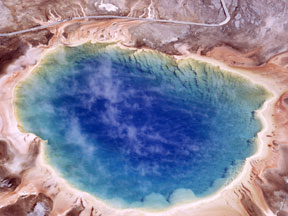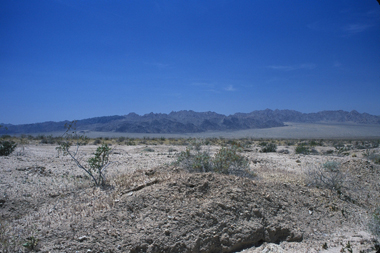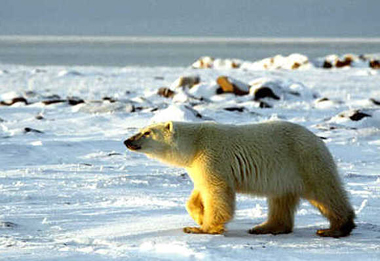Click on image for full size
NASA
Related links:
Extreme Environments - Temperature and Moisture
Extreme Environments - Acid, Radiation, and More!
Extremophiles - Creatures That Live in Extreme Environments
Climate Science from the Southeast Pacific Crossword Puzzle
Microbe Survives in Ocean's Deepest Realm, Thanks to Genetic Adaptations
Extreme Environments
Extreme environments are places that are inhospitable to most "normal" living creatures. Extreme environments are not necessarily lifeless. Certain types of organisms, known collectively as "extremophiles", have adapted to survive or even thrive in various types of extreme environments.
Familiar extreme environments include deserts, mountain peaks, caves, and the frozen realms of the Arctic and Antarctic. Some environments are very hot or very cold, extremely dry, or both. Other environments are highly acidic or alkaline, are exposed to high levels of radiation, are under tremendous pressure, or are otherwise hostile to "normal" life.
Some extreme environments are hostile to life in multiple ways. Most deserts are both hot and dry, while the Dry Valleys in Antarctica are extremely cold and dry. Some hot springs are exceptionally acidic as well as scaldingly hot. Hydrothermal vents on the sea floor lack sunlight, spew forth scalding water, are chemically exotic, and are subjected to the crushing pressures of the deep oceans.
Early in our planet's history, most environments on Earth were extreme by modern standards. Likewise, environments on alien worlds within our Solar System and beyond are often marginally habitable if at all. Discoveries of life in recent decades in many extreme, and previously thought sterile, environments on Earth have sparked new interest in the study of life in exotic locales. Such study may help us learn about the history of life on Earth as well as the possibility of life on other planets. Astrobiologists also use extreme environments on our planet as analogs for other worlds (such as Mars) to test life-sensing instruments and techniques before implementing them on space missions.












